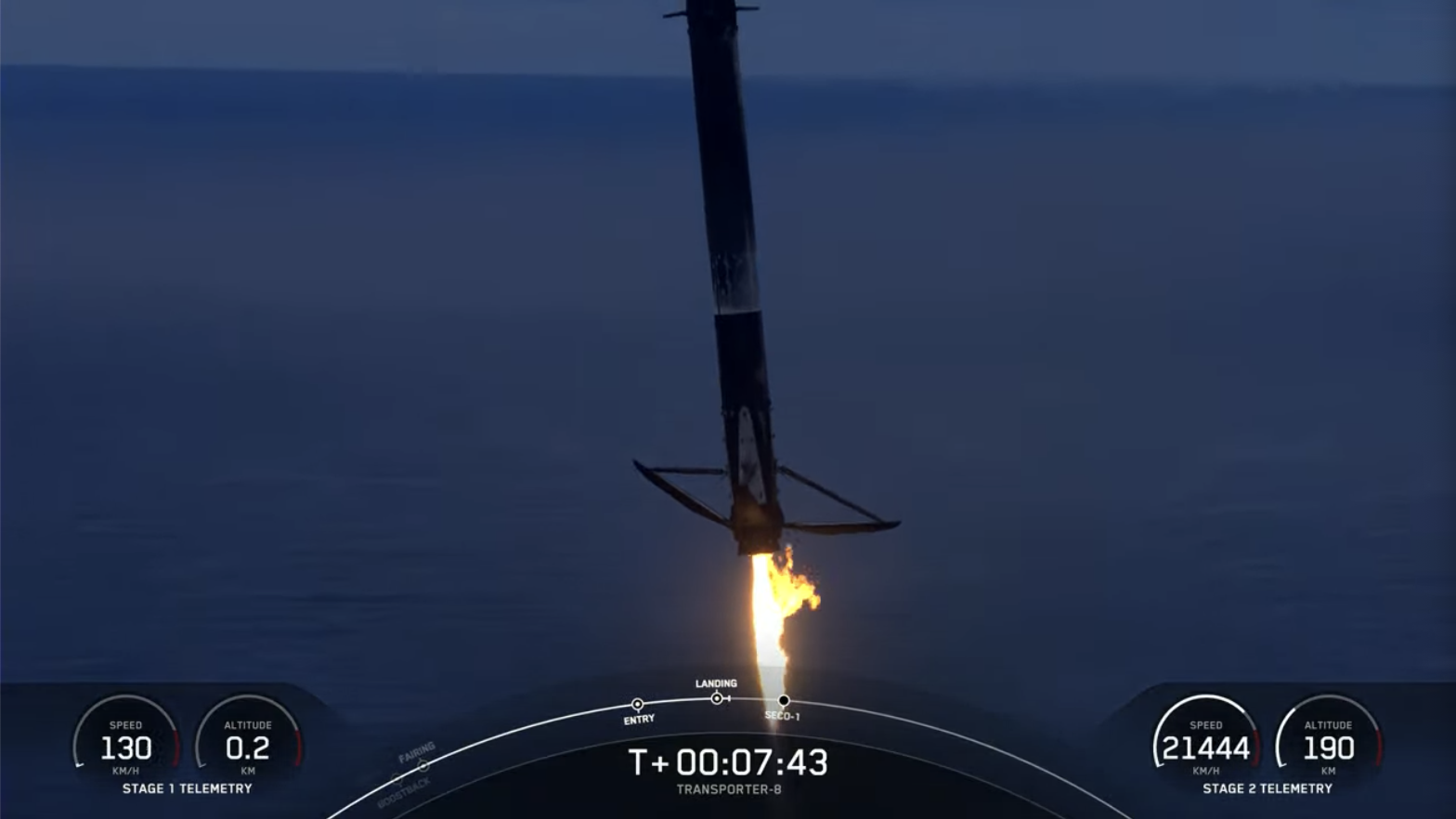
SpaceX has wrapped up a dramatic day of launches from the East and West Coasts of the United States, following a pair of back-to-back Falcon 9 missions, just 14 hours apart: the first out of Cape Canaveral Space Force Station, Fla., early Monday morning, and a second, just completed, from Vandenberg Space Force Base, Calif. Between them, the flight-seasoned boosters—both making their ninth launches—delivered dozens of small satellites uphill and pushed SpaceX’s reusability credentials through the significant milestone of 200 successful booster landings either on solid ground or oceanic drone ships.
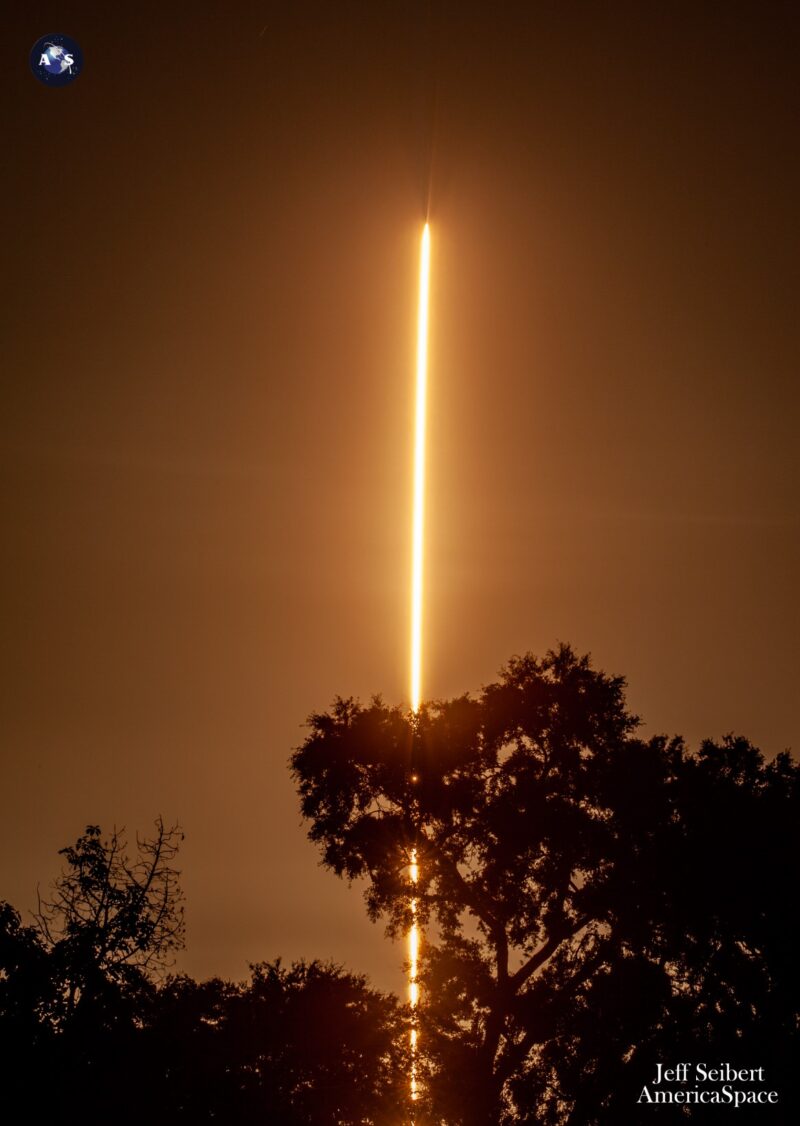
First up from the Cape’s storied Space Launch Complex (SLC)-40 was B1073, which entered service in May 2022 and previously wrapped up her eighth career launch last April. Aboard the Falcon 9 were 52 Starlink communications satellites, part of a steadily growing network in low-Earth orbit to facilitate high-speed and low-latency internet provision across more than 50 sovereign nations and international markets across North and South America, Europe, Asia, Oceania and Africa.
In recent weeks, Panama and Mozambique officially signed up to Starlink. Florida-based intercity operator Brightline has also adopted the network on its trains, becoming the first passenger rail service in the world to do so.
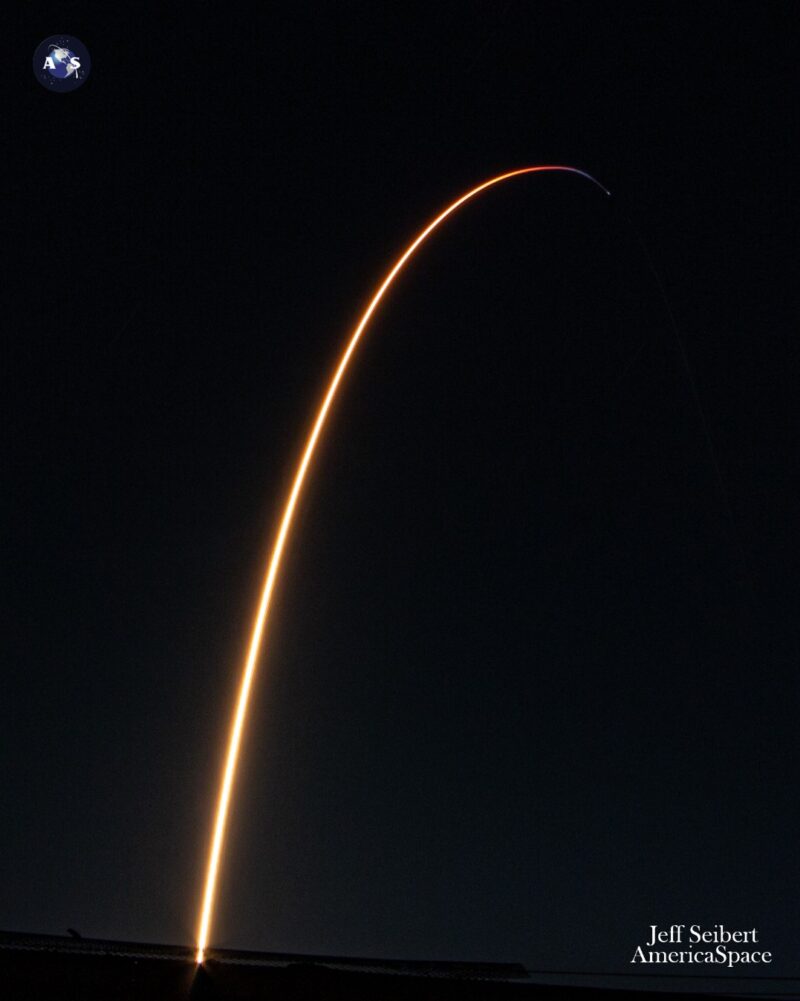
And El Salvador’s Ministry of Education has begun integrating Starlink capability into its schools to help close the digital divide between urban and remote rural communities. Since May 2019 (and including this morning’s launch), a grand total of over 4,500 production-design Starlinks have been inserted into orbit, with 929 flown this year alone.
With weather conditions at the Cape promising fair skies, following winds and a 90-percent “Go” probability, B1073 sprang from SLC-40 at 3:10 a.m. EDT Monday, right on the opening of a pair of T-0 opportunities this morning. Powering into the darkness, her nine Merlin 1D+ engines pushed the 230-foot-tall (70-meter) vehicle airborne, before B1073 separated at 2.5 minutes into flight to begin a controlled descent to land on the deck of the Autonomous Spaceport Drone Ship (ASDS), “Just Read the Instructions”, situated offshore in the Atlantic Ocean.
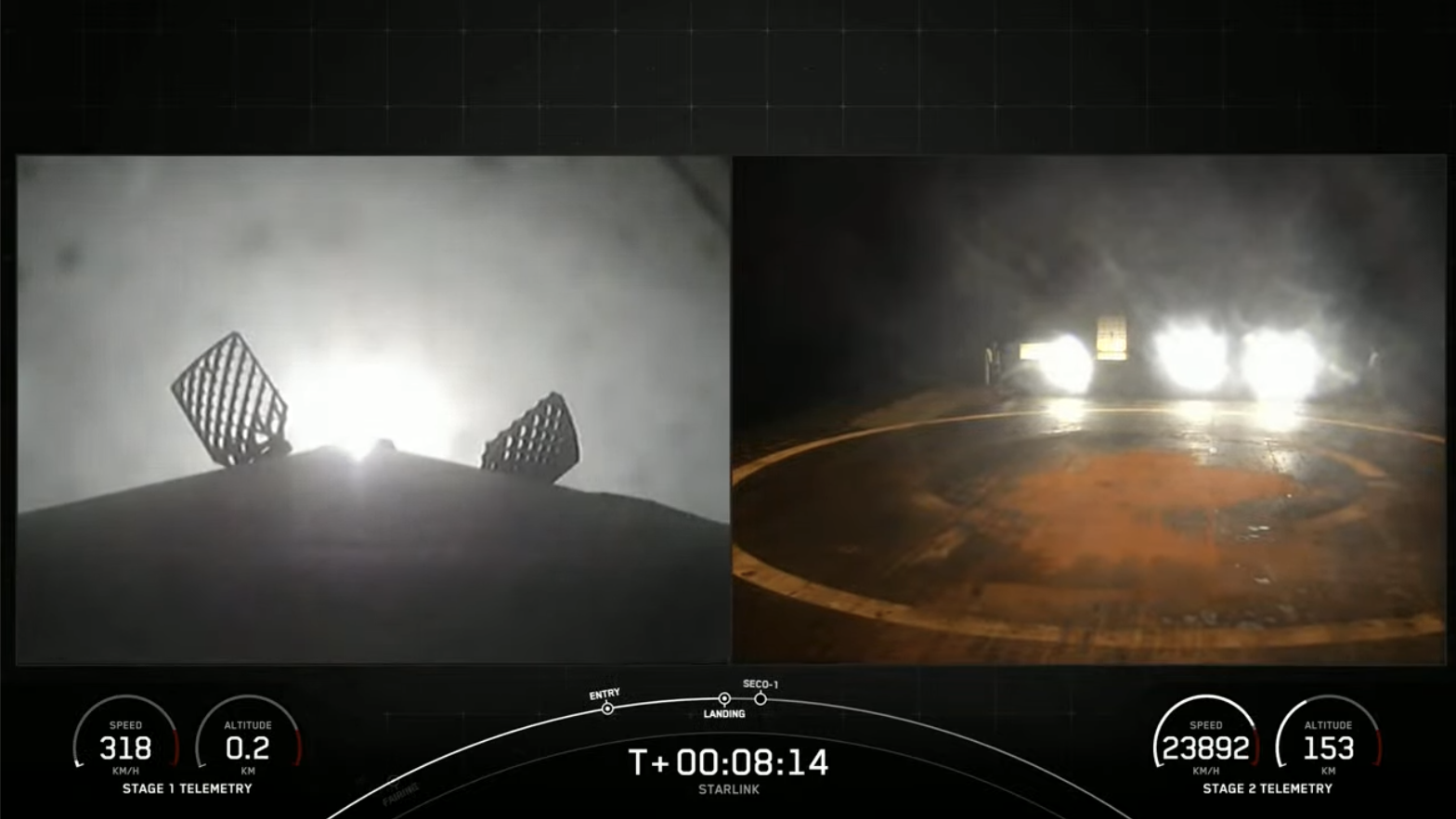
JRTI had put to sea out of Port Canaveral last Wednesday, bound for a recovery location some 400 miles (640 kilometers) offshore. Meanwhile, the single Merlin 1D+ Vacuum engine of the Falcon 9’s second stage ignited for a standard six-minute “burn” to deliver the 53-strong Starlink “stack” —totaling over 36,000 pounds (16,300 kilograms)—into orbit, with deployment occurring about an hour after launch.
In completing her ninth launch, B1073 has lifted a total of 230 Starlinks to orbit, plus the SES-22 and Amazonas Nexus geostationary communications satellites and a lunar-bound mission with Japan’s Hakuto-R lander, the United Arab Emirates (UAE) Rashid rover and NASA’s water-ice-seeking Lunar Flashlight. Last March, on her seventh mission, she became the most flight-seasoned Falcon 9 to carry a payload—human or cargo—to the ISS.
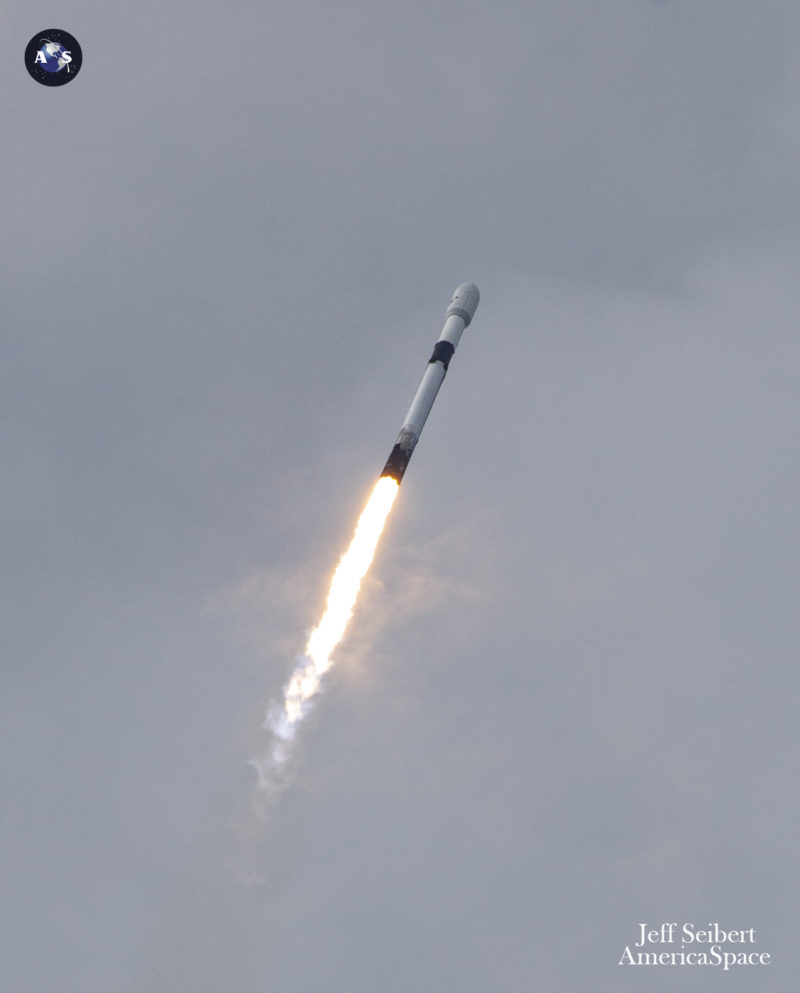
Attention then turned to the West Coast, where another Falcon 9 booster, also with eight prior missions to her credit, stood poised at Space Launch Complex (SLC)-4E. Veteran core B1071—a dedicated “Vandenberg Falcon”, which entered service in February 2022, made six flights last year and has now completed three more in 2023’s opening half—targeted a 57-minute “launch window”, which opened at 2:19 p.m. PDT Monday, with a backup opportunity at the same time on Tuesday.
Aboard the mission was the multi-payload Transporter-8, totaling 72 CubeSats, microsats, a re-entry capsule and orbital transfer vehicles for multiple sovereign nations, to be deployed over a 25-minute period, beginning about an hour after launch. A notable frequent flyer was Italian firm D-Orbit, whose next ION Satellite Carrier Vehicle (SCV-011)—nicknamed “Savvy Simon”—was deployed at 80 minutes into the mission to deliver its own suite of passenger payloads into specific orbital locations.
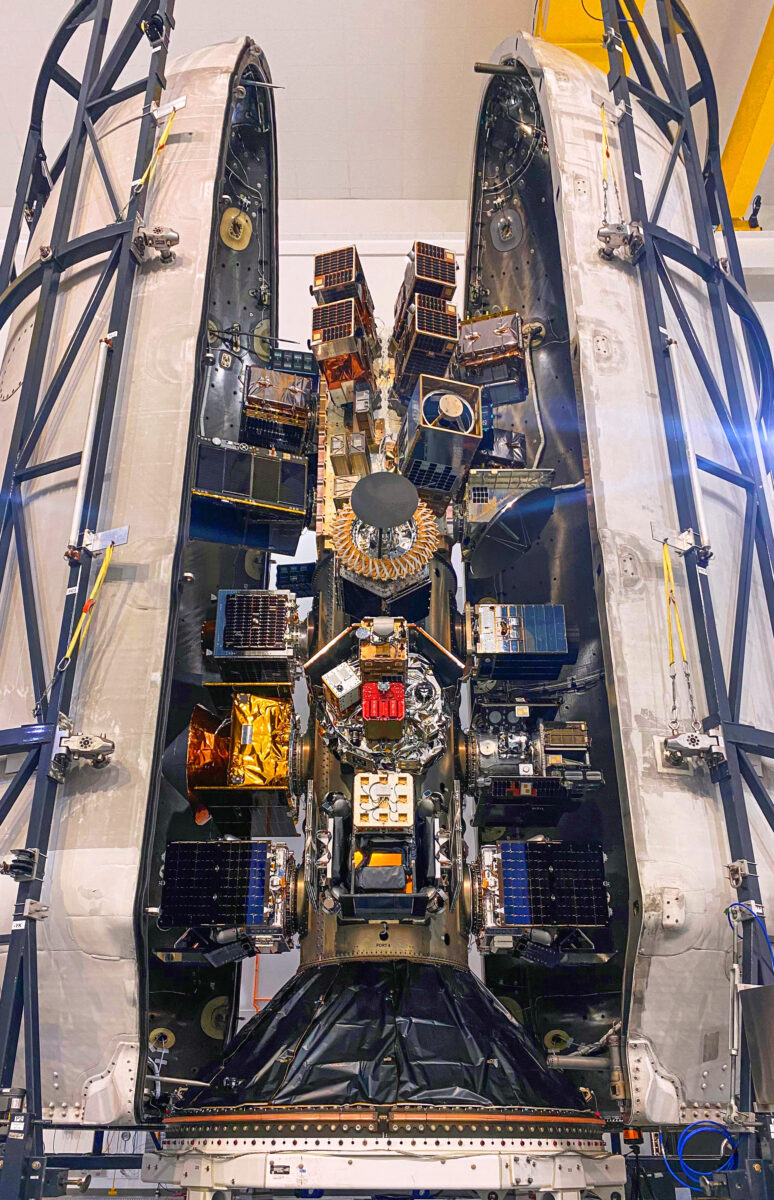
As its name implies, this was SpaceX’s eighth launch of a Transporter stack. A pair of initial missions in January and June of 2021, then three more in January, April and May of 2022 and most recently Transporter-6 and 7 last January and April, lifted a total of 600 payloads—including miniaturized CubeSats and PocketQubes—to support disciplines from Earth observation, remote sensing and meteorology to technology, communications and navigation and from Signals Intelligence (SIGINT), education and amateur radio to Internet of Things (IoT), Ultra-High-Definition (UHD) television streaming and biological research, on behalf of dozens of sovereign nations.
Notably, Transporter-1’s haul of 143 small satellites, totaling 11,000 pounds (5,000 kilograms), still stands as the greatest number of discrete payloads ever orbited by a single U.S. orbital-class launch vehicle. Last year’s Transporter-5 supported a first-of-its-kind robotic cutting of metals demonstration, in furtherance of NanoRacks’ future Space Outpost design concepts. And the Transporter program has facilitated the launches of the maiden national satellites for Albania, Kuwait and Armenia.
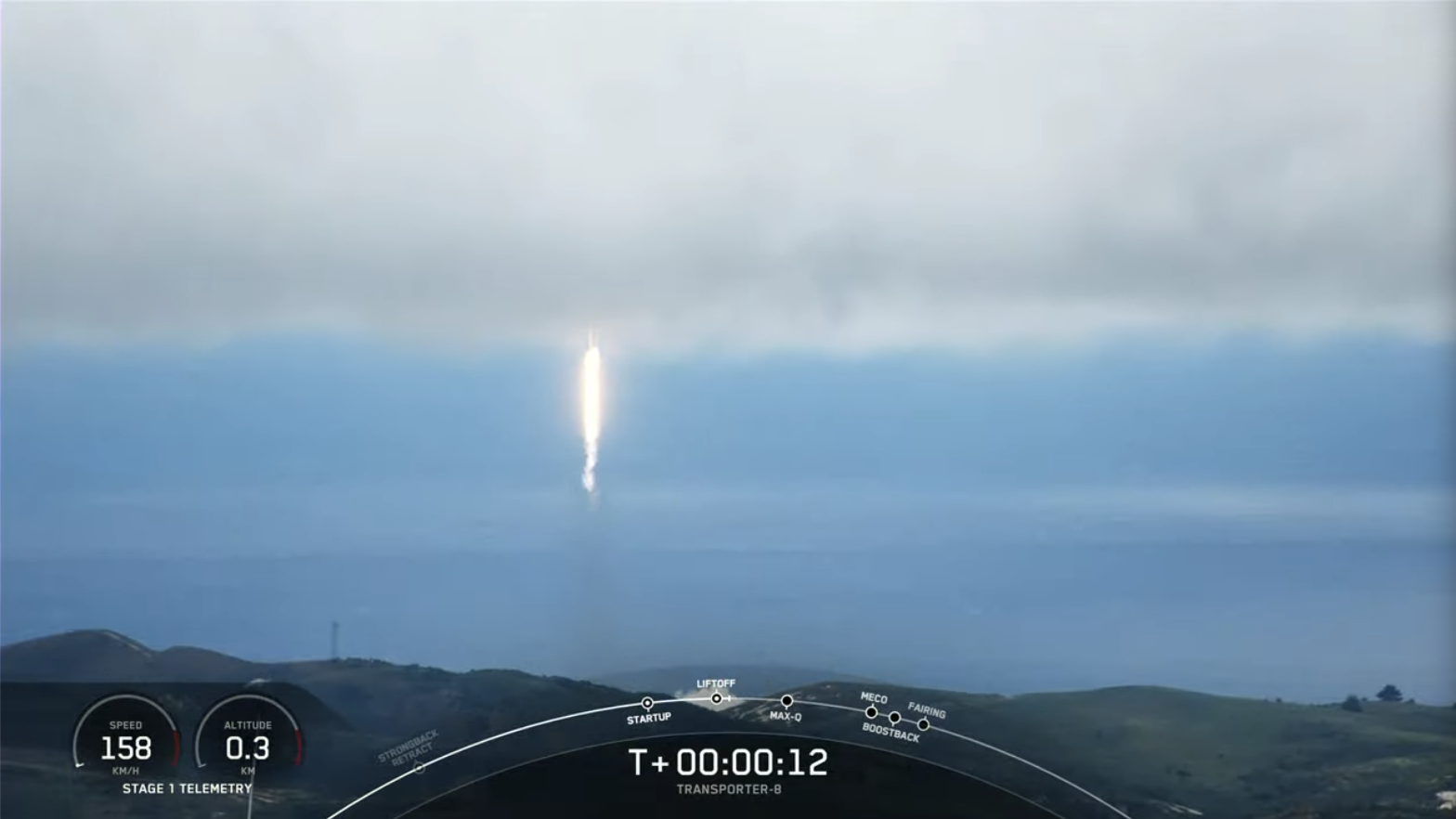
After a slight slip past the opening of Monday’s launch window, B1071 took flight at 2:35 p.m. PDT, only 14 hours and 25 minutes after her East Coast predecessor. Less than nine minutes after launch, she pirouetted to a smooth touchdown at Vandenberg’s Landing Zone (LZ)-4, wrapping up the 200th successful landing of a Falcon-class booster on either solid ground or offshore in a little less than 7.5 years.
Ever since the first Falcon 9 touched down on terra firma, at Cape Canaveral’s Landing Zone (LZ)-1 in December 2015, followed by the first successful on-point return of a booster to the expansive deck of an Autonomous Spaceport Drone Ship (ASDS) in April 2016, there have now been 44 successful “land” landings and 156 “oceanic” ASDS landings. But as outlined in a previous AmericaSpace story, those successes came after a number of spectacular failures and “close-but-no-cigar” near-misses.
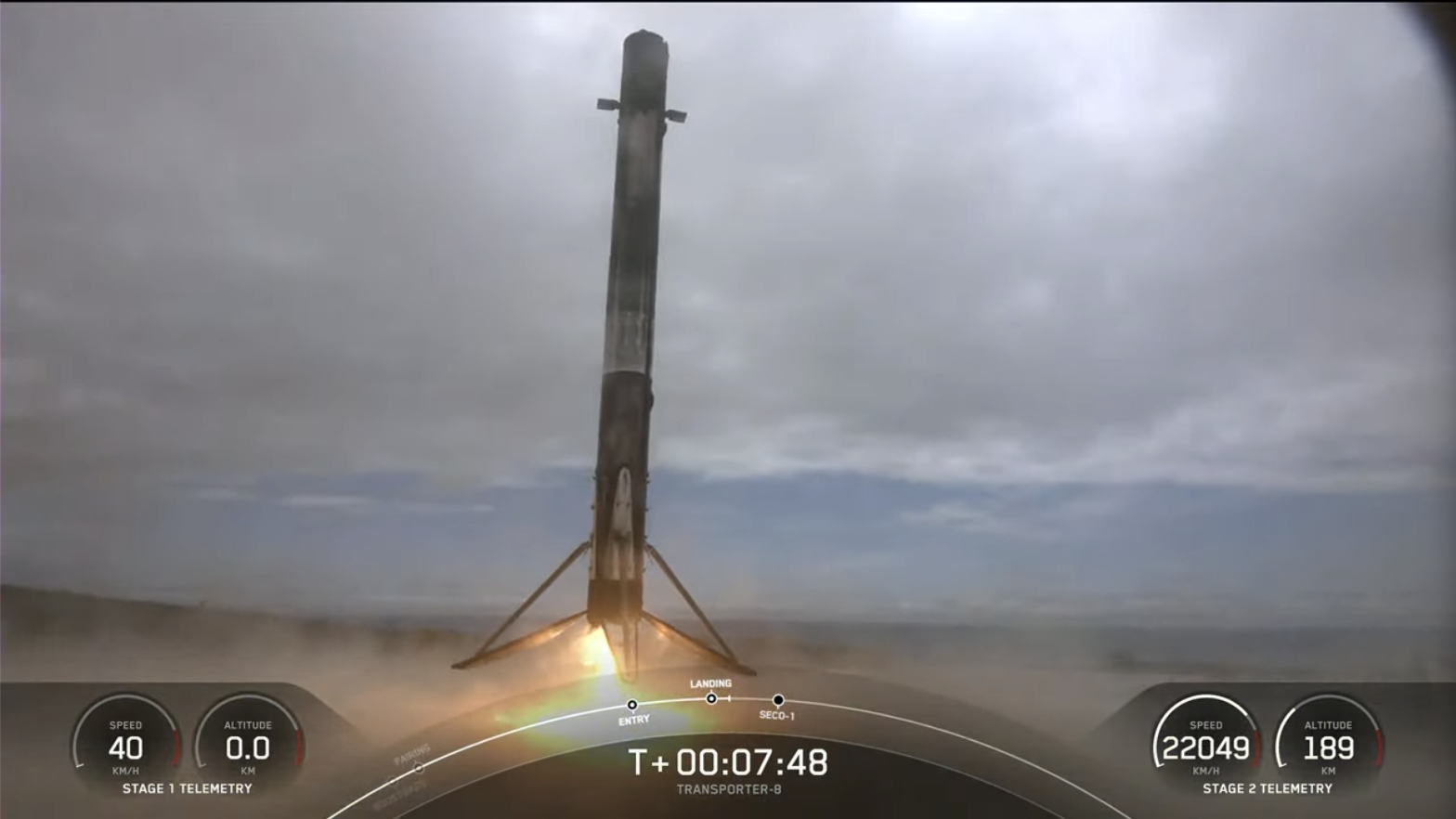
Shortly after B1071 touched down to wrap up this impressive milestone, the Merlin 1D+ Vacuum engine of the Falcon 9’s second stage fell silent on time about 8.5 minutes into the mission. This was followed by a 50-minute period of “coasting” and a brief re-light of the second-stage engine, before the 25-minute process to deploy the 72 Transporter-8 payloads got underway a little shy of an hour after liftoff.
First out was Spain’s FOSSASAT-FEROX, part of an Internet of Things (IoT) network, with the last in a series of four Blackjack reconnaissance satellites for the Defense Advanced Research Projects Agency (DARPA) set to deploy last. All told, Transporter-8 includes payloads from Spain, Germany, the United States, Luxembourg, Argentina, India, Finland, Australia, Japan, Chile and Israel and covered a range of disciplines from IoT to atmospheric methane monitoring, from Earth observations to technology demonstrations and from communications to space debris management.




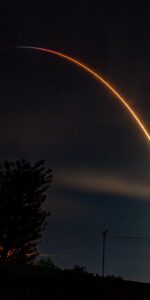

6 Comments
6 Pings & Trackbacks
Pingback:SpaceX Wraps Up Busy June, Appears to be like Forward to one July Euclid Release - NACION ASTRAL
Pingback:Launch Scrub: “Old Guard” Falcon 9 Aborts at T-5 Seconds - AmericaSpace
Pingback:After Daylong Delay, Vandenberg Falcon Launches, Lands for Tenth Time - AmericaSpace
Pingback:SpaceX Launches Year’s 70th Falcon 9, Continues Record-Breaking Year - AmericaSpace
Pingback:SpaceX Looks to Saturday Falcon 9 Double-Header - AmericaSpace
Pingback:SpaceX Looks to Saturday Falcon 9 Double-Header - SPACERFIT